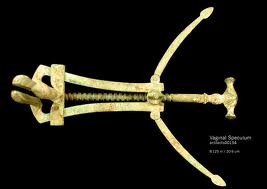Here is Jesus healing in Mark 9: 20-27. The father of an epileptic boy, believing that the problem is a demon inhabiting him, asks Jesus to heal him. The boy is summoned.
And when the spirit saw Jesus, immediately it convulsed the boy, and he fell on the ground and rolled about, foaming at the mouth. And Jesus asked his father, “How long has this been happening to him?” And he said, “From childhood. And it has often cast him into fire and into water, to destroy him. But if you can do anything, have compassion on us and help us.” And Jesus rebuked the unclean spirit, saying to it, “You mute and deaf spirit, I command you, come out of him and never enter him again.” And after crying out and convulsing him terribly, it came out, and the boy was like a corpse, so that most of them said, “He is dead.” But Jesus took him by the hand and lifted him up, and he arose.
Here is Greek healing, earlier than Jesus, from Wikipedia:
Another of Hippocrates’s major contributions may be found in his descriptions of the symptomatology, physical findings, surgical treatment and prognosis of thoracic empyema, i.e. suppuration of the lining of the chest cavity. His teachings remain relevant to present-day students of pulmonary medicine and surgery. Hippocrates was the first documented chest surgeon and his findings are still valid.
Hippocratic medicine was notable for its strict professionalism, discipline, and rigorous practice.The Hippocratic work On the Physician recommends that physicians always be well-kempt, honest, calm, understanding, and serious. The Hippocratic physician paid careful attention to all aspects of his practice: he followed detailed specifications for, “lighting, personnel, instruments, positioning of the patient, and techniques of bandaging and splinting” in the ancient operating room. He even kept his fingernails to a precise length.
The Romans, naturally, are better known for the engineering aspects:
The Romans invented numerous surgical instruments, including the first instruments unique to women (vaginal specula with a screw device which when turned forces a cross-bar to push the blades outward), as well as the surgical uses of forceps, scalpels, cautery, cross-bladed scissors, and the surgical needle. Romans also performed cataract surgery.
Jesus came to preach, to heal and to cast out demons; this in the Roman Empire when it was discovering anesthetics and making major medical advances. Presumably if Jesus came to the United States today he would avoid places like Johns Hopkins and hang out with the snake handlers in the backwoods of the South.
This reduces the credibility of Jesus-as-God to zero. But it supports the idea that Jesus was a Jewish fundamentalist, working within the framework of Jewish law and tradition, and ignorant and hostile regarding all things Roman.
